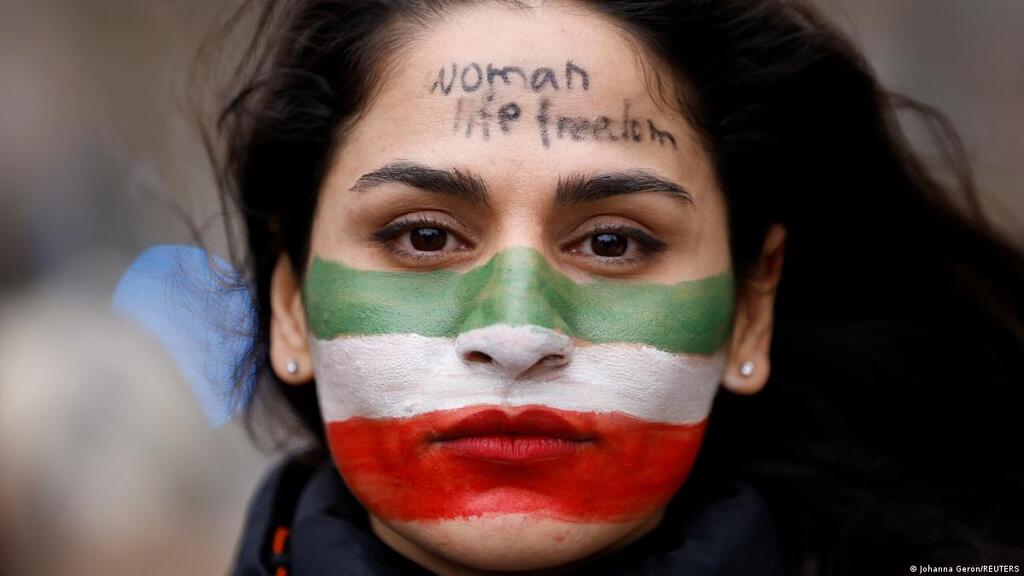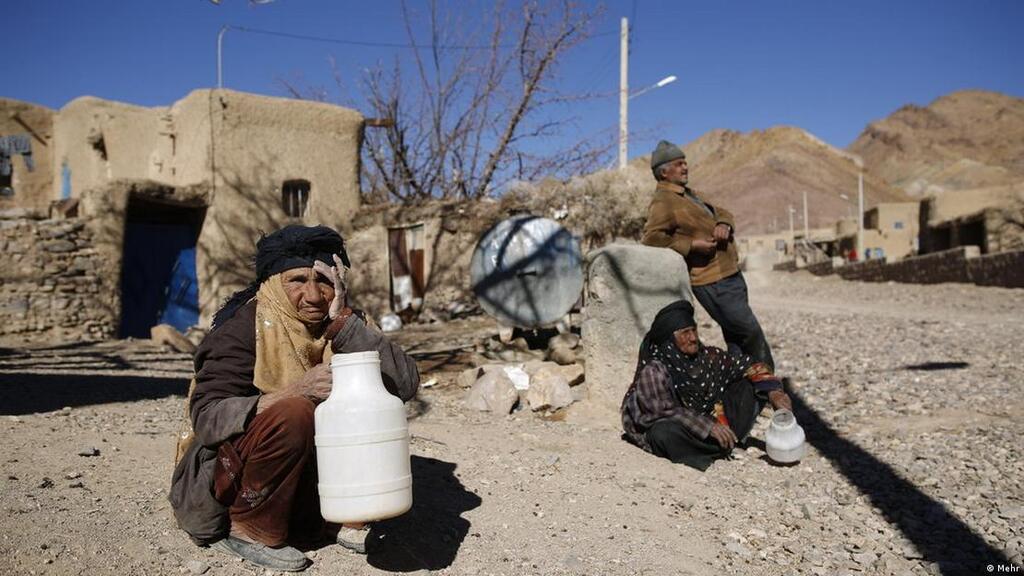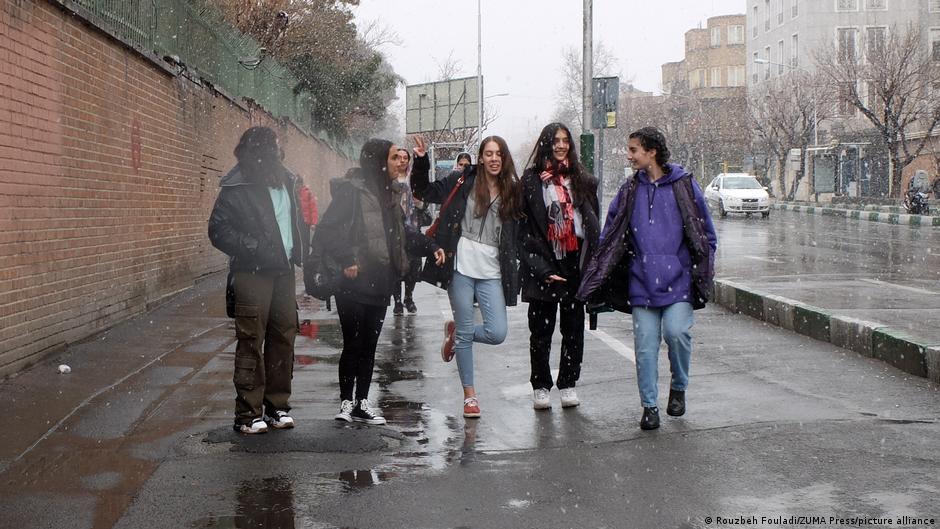Why Iran's revolutionary process will persist

The Islamic Republic of Iran is facing acute political and socio-economic crises, the ramifications of which could endanger the regime's stability and even its survival. As a result, over the past decade, Iran has seen more frequent and more radical nationwide protests: at the turn of the year 2017/18, in November 2019 and since mid-September of last year.
In addition, the country is beset by significant ecological and socio-cultural crises that underpin the wide gulf separating state and society. The 2017/18 protests marked the beginning of a long-term revolutionary process in Iran, not unlike that witnessed by the Arab world since 2010/11.
Last year's protests calling for regime change showed for the first time that the demonstrations spanned various social classes, arguably the missing link in the case of previous uprisings. As such, these protests pose a genuine threat to the regime.
A look at key political and socio-economic indicators reveals the extent to which the two crises have paved the way for the revolutionary protests engulfing the country since the tragic death of Mahsa "Jina" Amini last September.

The first concerns the political crisis – indeed the centre of gravity – while the second pertains to the economic conditions, which also undergird the socio-economic crisis. Crucially, both of these are structural and thus intimately linked to the regime's politico-economic constitution and (mal-)performance.
An unreformable system
Iran's political crisis is linked to the quasi-impossibility of reform within the Islamic Republic, which has sustained political authoritarianism and made political transformation elusive. In fact, this unreformability is especially due to the utter failure of the establishment's reformist faction, which has produced the bulk of Iran's post-war presidents, in bringing about or pushing for much-needed reform.
Reflecting their loss of legitimacy, the regime's reformists, or so-called moderates, thus emerged as a target of popular rage during the 2017/18 protests. While the idea of reform within the Islamic Republic has seemingly been irreversibly buried, the mal-performance of the Hassan Rouhani administration, backed by the elite’s reformist faction, constituted the final nail in the coffin.
Profound popular disillusionment with the entirety of the political elite, including its hard-line and reformist factions, has been on full display ever since. Voter participation rates in both the February 2020 parliamentary and June 2021 presidential elections were historically low. In both cases, the wider conservative camp prevailed.
Yet, given the latter's monopolisation of power, one and a half years into the presidency of the ultraconservative Ebrahim Raisi, it has so far proven unlikely that the hardliners will use their grip on resources to benefit the many Iranians struggling to make ends meet. This has deepened the nation's downward socio-economic spiral.

The Islamic Republic has one of the most repressive and authoritarian systems globally: take, for example, its repression of women, students and workers' movements (all forming the backbone of Iran's civil society), its dismal human-rights record, its lack of the freedom of assembly and press freedoms, among others.
It is therefore no surprise that the Bertelsmann Transformation Index (BTI) 2022 labelled the country a 'hard-line autocracy', making it the 11th lowest-ranked worldwide – slightly worse than Sudan and marginally better than Saudi Arabia and Syria.
In terms of governance – defined by the BTI taking into account inter alia steering capability, resource efficiency, consensus building and international cooperation – the country fares the worst, ranked 6th lowest in the world, giving it a category of 'failed' governance, with South Sudan and Libya better placed. This poor showing reflects the Iranian elite’s incompetency and its corruption, both of which plague Iranian society.
Socio-economic crisis
Iran's raging socio-economic crisis is arguably the combined result of an ideologically grounded political economy that favours regime loyalists, an oligarchic elite and regime policies that barely address the burning social question. In terms of economic transformation, Iran was downgraded to the worst category, ranking 13th lowest globally, practically on equal terms with Taliban-ruled neighbouring Afghanistan and worse than its other immediate neighbour Iraq.
Over the last decade, poverty has increased considerably in Iran to engulf large sections of the middle class, a process facilitated by stagflation – i.e. a stagnating economy with high inflation rates currently running above 50%.
Not only is Iran consistently placed in the BTI 2022’s lowest categories, but it even ranks at the very bottom in international comparison. The accumulation of anger and frustration resulting from those structural economic-cum-political crises fuelled 4,000 protests over 2021 and 2022 respectively (according to ACLED, the Armed Conflict Location and Event Data Project), before spawning the "revolutionary episode", as Asef Bayat, a leading scholar on social movements in the Middle East calls it, which kicked off last September.
Revolutionary process to continue
Four groups have come to the fore during this latest wave of protests: women, young people, students, and marginalised ethnicities. Their common denominator is that they all suffer disproportionately socio-economically and to a great extent also politically and socio-culturally.
At present, Iran’s revolutionary process is at a stalemate. Neither the regime nor the protesters have been able to overwhelm the other once and for all. This winter, the number of street protests have – except for the post-Friday prayers demonstrations in the country’s south-eastern Sistan and Baluchistan province – clearly plummeted, likely due to the governmental crackdown and the seasonal cold weather. Strikes, however, are still being held.
Looking ahead, it is likely the street protests will recommence this coming spring, not least given the unprecedented depreciation of the Iranian currency and inflation rates of over 50 percent. As seen in the past, protests fuelled by socio-economic woes are often quick to turn political and anti-regime.
In other words, the revolutionary process looks set to continue, in no small part because of the arguably irreversible gulf separating state and society, cemented by an unreformable regime that is either unable – or unwilling – to cater to the Iranian people’s most burning needs.
© Qantara.de 2023